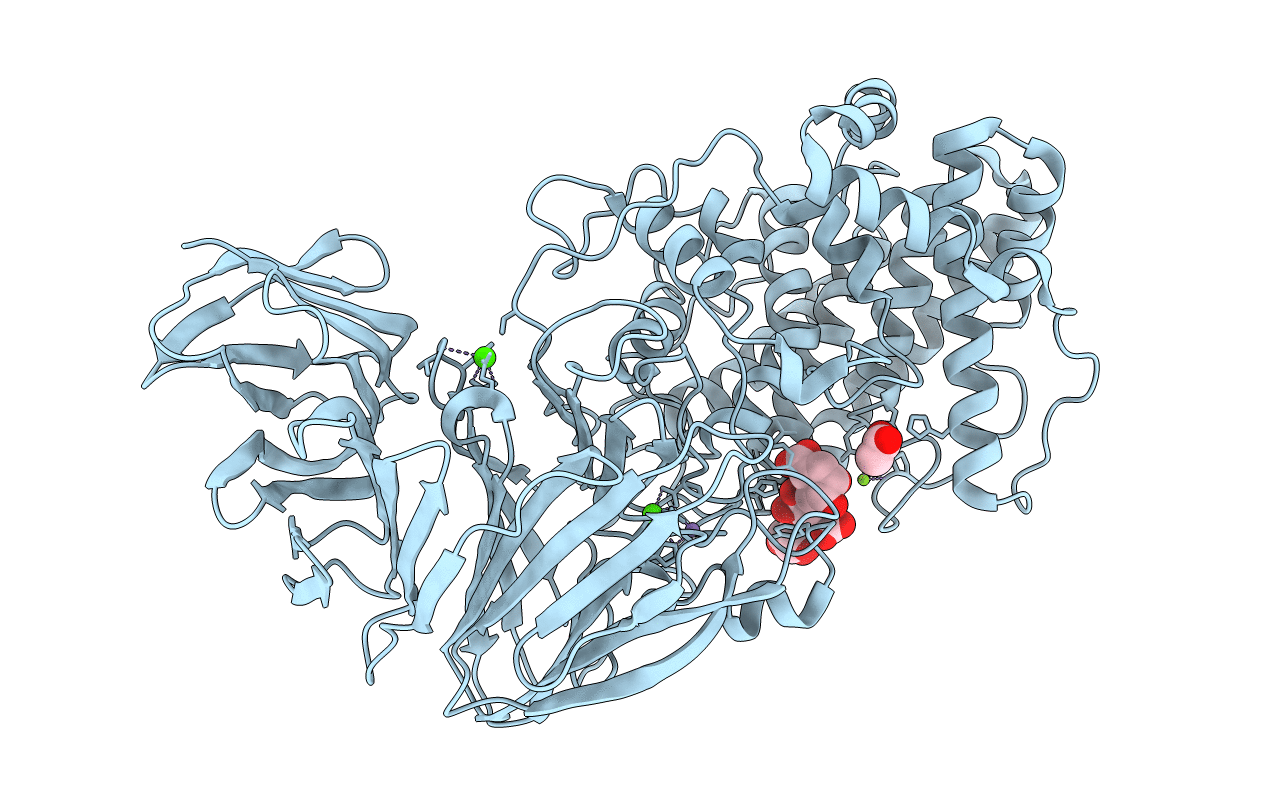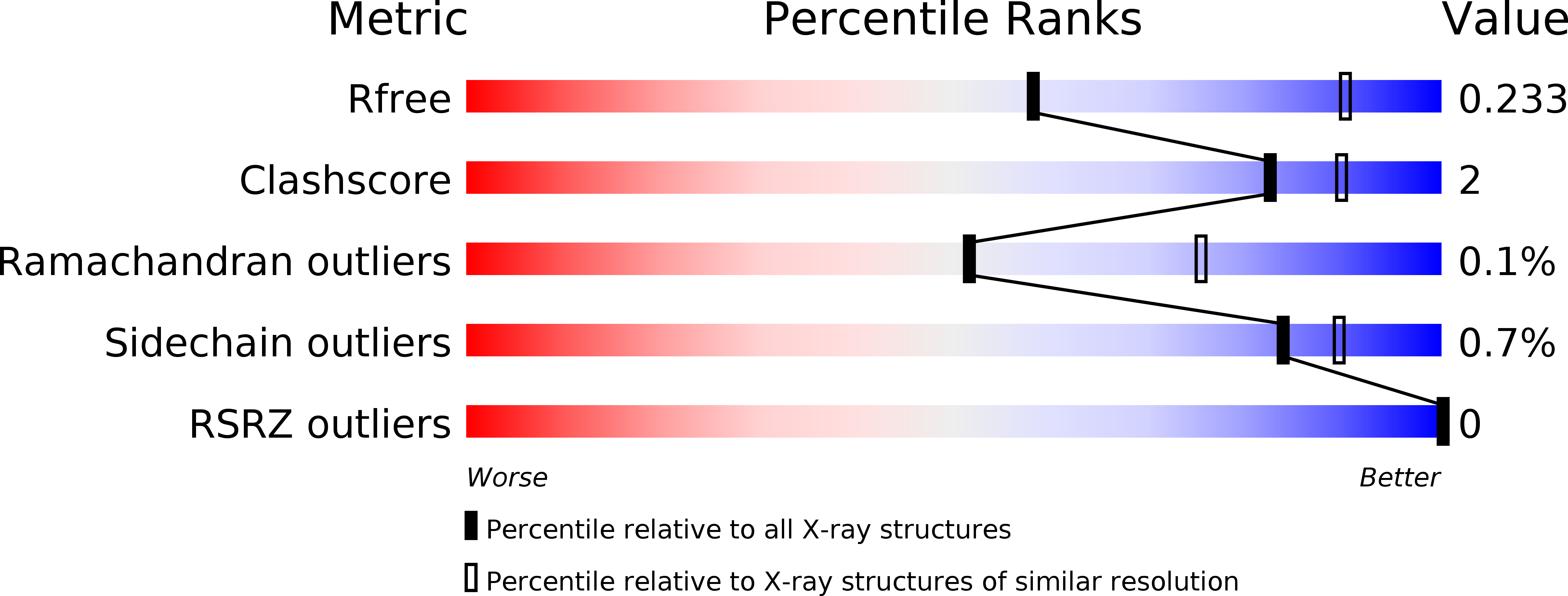
Deposition Date
2019-03-27
Release Date
2019-10-30
Last Version Date
2024-03-27
Entry Detail
PDB ID:
6JPH
Keywords:
Title:
Crystal structure of the catalytic domain of a multi-domain alginate lyase Dp0100 from thermophilic bacterium Defluviitalea phaphyphila
Biological Source:
Source Organism:
Defluviitalea phaphyphila (Taxon ID: 1473580)
Method Details:
Experimental Method:
Resolution:
2.76 Å
R-Value Free:
0.22
R-Value Work:
0.19
Space Group:
P 3 2 1


